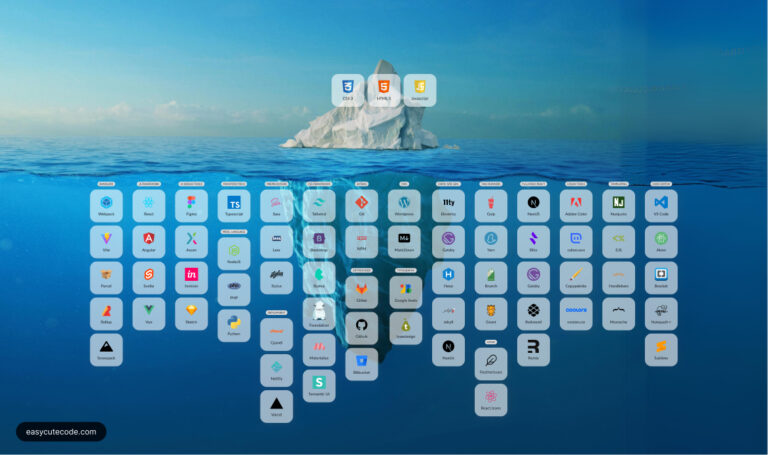
You’ve mastered HTML, CSS, and JavaScript—congratulations! 🎉
These core technologies (HTML, CSS and JS) are the bedrock of the web, but when you open any real-world project today, you’ll see something unexpected: vanilla HTML/CSS/JS are nowhere to be found. Instead, you’ll encounter files you’ve never seen before.
Next.JS is a popular tool: open this project, go through the files and folders, and try to find a file with either of the following file extensions, .html .css or .js . You’ll barely find any; then why do these other files exist?
Why? Because every tool in the ecosystem exists to solve a problem that once frustrated developers. Let’s explore how we got here—and how you can shortcut years of trial and error.
Understanding the why provides valuable experience.
Front-end development ecosystem
The front-end development landscape is vast, with various tools and frameworks designed to enhance efficiency, innovation, and user experience.
While HTML, CSS, and JavaScript form the foundational trio, the ecosystem extends far beyond these basics, addressing specific needs like UI/UX design, interactivity, and scalability.
Here’s a screenshot from a Google search for ‘front-end development tools’. This only shows a sample of the available tools.

The evolution from core technologies to a rich toolset is driven by the need to improve your developer experience.
Gaining experience
Understanding why a tool exists is crucial. This series teaches you to learn by doing, focusing on problem-solving skills rather than memorizing tool names.
An overview of some tools that sprung up from the foundational tech.



What are Tools: Frameworks, libraries, etc.
So far, we have been using the term ‘tool’ to describe all these other technologies that are not HTML, CSS, or Javascript, but other terms exist to define tools. Terms like ‘Framework’ and ‘Library’ are the most common; others are Bundlers, Task runners, Preprocessors, Packages, Git and many more.
You will learn more about them as we move along.
The Full-Stack: Databases & Languages
While HTML, CSS, and JavaScript are the foundational technologies, two more ‘tools’ are considered fundamental, a database and a programming language.
So ideally, we have HTML, CSS, Javascript, a Database and a Programming language.


Conclusion
In summary, while HTML, CSS, and JavaScript are foundational technologies in web development for a beginner, it’s essential to recognize the integral roles of databases and programming languages.
Understanding the ecosystem is a journey, not a destination. Embrace the learning process, pick the tools that resonate with you, and gradually build your expertise. With a clear roadmap and a strategic tech stack, you’re well on your way to mastering the intricacies of web development. Happy coding!
